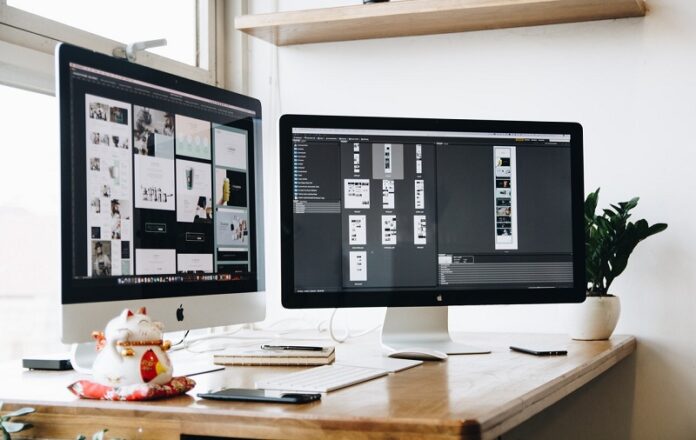Bespoke is generally accepted to be a one-off design, something that is specifically made for the user, and as a concept, it has become somewhat of a buzzword. Everyone wants something that no one else has. Or to be able to replicate something they have seen that someone else has. With the proliferation of social media, bespoke has become big business.
A prime example is how the integration of technology and design has met perfectly in the trend that is the bespoke, self-designedinterior living space.
Yes, kitchens and bathrooms have always been spaces where you are able to add your specific style to the home and shared spaces. However, the process has changed, and modern design technology means that the current offerings provide more than simply choosing the countertops and cupboard/draw handles. Room design is now a holistic process that can encompass everything from design to fitting, testing, and even walking through the room online.
How tech has changed design
Technology has touched every part of modern human existence and has also been at the forefront of most of the changes in design. How graphic design takes place for products, architecture, automotive design, gaming, interior room planning, and much, much more is phenomenal. No longer aredrafting and drawing boards, rulers, and actual paper required. Thereare currently various computer programs and online applications that allow all of this to be done electronically. Furthermore, designs in progress can be shared online, and all those involved in the final product can add and amend to the renderings and drawings in the Cloud using CAD.
The Evolution of CAD
Computer aided design or CAD is the main design tool, and the term has become synonymous with design. Various programs, applications, and methodologies have become commonplace and are now associated with all forms of design. It is exactly as it says on the tin and is any form of design that is done by or on and aided by a computer.
The history of CADarguably started as early as the 1950’s where the term was initially used to describe automatically programmed tools at MIT, interactive graphics through PRONTO at GM, and leading to the first professional drawing computer program, Sketchpad, in the 1960s. This was the first program for 3 dimensional modelling, and although only capable of doing so with simple models and shapes such as cube and prisms, the technology had arrived and with it a revolution in both design and its related technologies.
This development has seen CAD move from monochrome 2D drawings to 3D drawings and then 3D visualizations to 3D models and sample rooms in brilliant and dazzling color and detail.
From its inception, this form of design has come a long way and is now on the cusp of further development, with AI, VR, and augmented reality about to make some serious changes to the CAD applications that we all know and use.
AI and machine learning in design
AI is here to change design forever. With the amounts of prior information and the speed at which data can be analyzed, AI computer-aided design will be sped up considerably. More design solutions can be computed automatically, and suggested adjustments made to already drawn technical designs. Thus AI will increase the speed at which designs are made, and in doing so, reduce the costs for high-level design. A designer will still be needed to pick the right solutions suggested by the AI-led CAD.
VR in design
Virtual reality has also been added to the CAD that we know, and the norm is now for designers to walk you through a room before it even exists. VR headsets linked to the 3D design enable more interaction with a design than ever before. This will arguably solve one of the main issues faced by designers: to show and convince the client what the spacewill look like. VR is accepted as the best means to sell a design that there has ever been. In the future is expected that clients of this form of design will be able to fully interact with the space, opening and closing doors and cabinets and switching on and off lights, allowing for a true sense of a room that has yet to be built.
Augmented reality and design
This is whereby a virtual overlay is used on the computer to display how the space or design will look in reality. Computer-generated images, generally done using CAD, are layered on top of the actual setting to provide a clear idea of what the finished design in the real space will look like. It is a technology that came to the forein the game Pokémon Go and has since then been seen as a way for design to produce more realistic mockups and save costs on design options by simply using AR to provide clear ideas of what the finished product will look like in the real world. All that is needed is a smartphone with an internet connection, a camera viewfinder, and a high-resolution screen.
Tech has proven to be a leveler that has been at the forefront of democratizing design, knowledge, and more. In this instance, technology has made what was previously the preserve of the rich and famous a possibility for all.The ability to design a kitchen or living space to fit precisely with your lifestyle and living choices is the new (affordable for all) normal. There are those in the design field who feel that the tech mentioned here has taken away the skill of the drawer or designer, but the truth of the matter is that most designers feel that you still need the human element and that technology has only made what the brain imagines a possibility.
Homebuilders, remodelers, and interior designers have all now jumped upon this bandwagon and are able to design at levels and in detail that we have not seen before.
You are now able to design and plan our living spaces, kitchens, and utilities in the home like never before. If you are remodeling or even just thinking of updating the kitchen, now has never been a better time. The technology, as aforementioned, has meant that you can get exactly what you want.






![SIMS 4 Download Free For PC Full Version 2019 [UPDATED] SIMS 4 Download](https://www.geniustechie.com/wp-content/uploads/2019/03/SIMS-4-Download-100x70.jpg)


